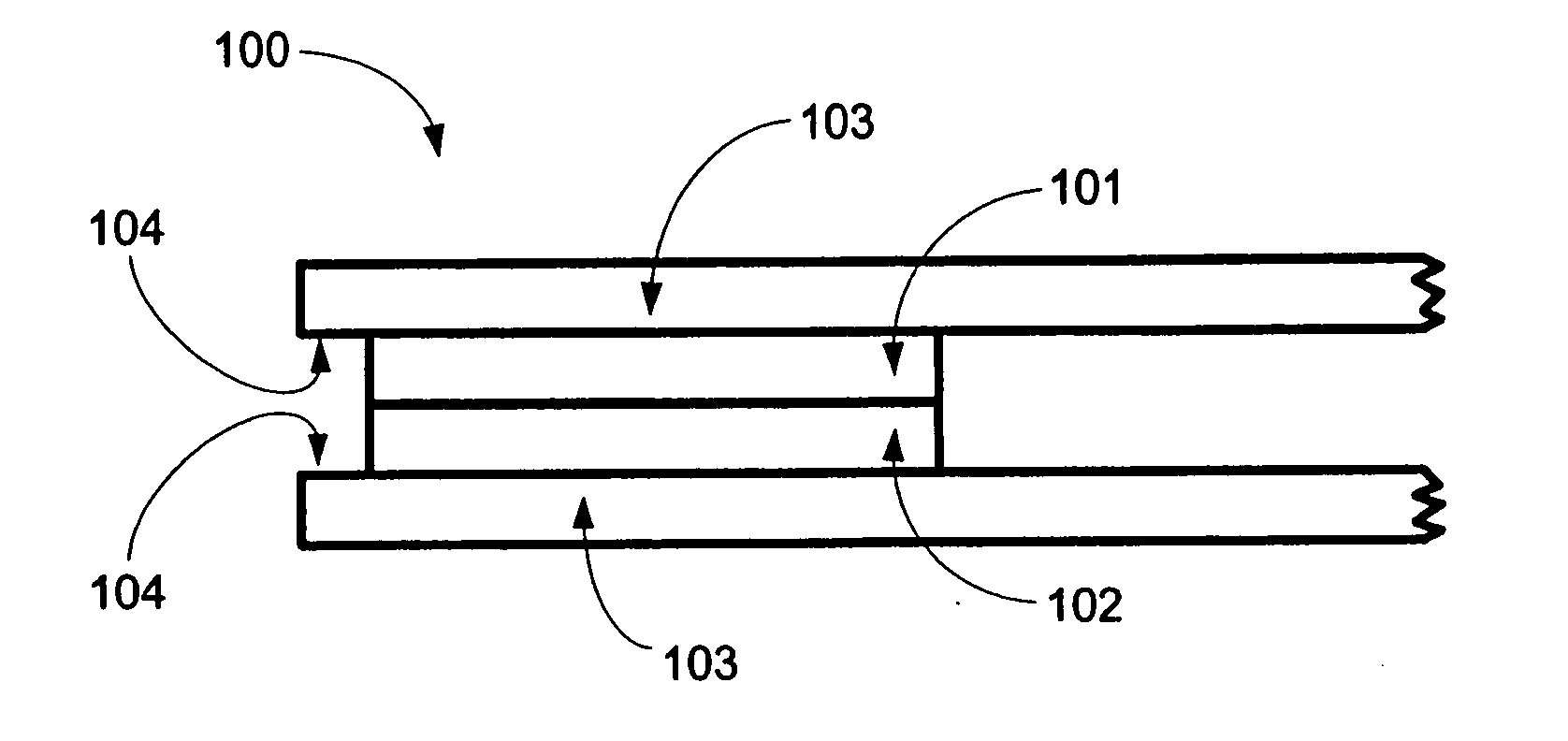Cohesive reclosure systems and containers using same
a technology of reclosure system and cohesion, which is applied in the direction of flexible container closure, closure using stoppers, liquid handling, etc., can solve the problems of increasing manufacturing cost, difficulty in automated handling of sheets or webs with pressure-sensitive adhesives applied thereto, and insufficient closure strength of pressure-sensitive adhesives. achieve the effect of low blocking characteristics
- Summary
- Abstract
- Description
- Claims
- Application Information
AI Technical Summary
Benefits of technology
Problems solved by technology
Method used
Image
Examples
examples
[0148] In the examples, all parts are parts by weight, unless otherwise indicated. The following abbreviations are used throughout the examples: [0149] SEBS styrene-ethylene-butylene-sytrene block copolymer [0150] SIBS styrene-isobutylene-styrene block copolymer [0151] SIS styrene-isoprene-styrene block copolymer [0152] EVA ethylene vinyl acetate polymer [0153] PS polystyrene [0154] LLDPE linear low density polyethylene [0155] PE polyethylene
[0156] The following tests are used to measure the various test results reported below:
[0157] T-Peel Strength:
[0158] This test is used to determine the peel force required to cause two cohesive layers to release from each other when the carrier film of the reclosure is secured to a 2-mil splice tape and when pulling the edges of the reclosure in opposite directions away from and perpendicular to the interface of the cohesive bond. After the two cohesive layers are placed in contact, the two layers are engaged by means of a 4.5 lb rolldown bar...
PUM
 Login to View More
Login to View More Abstract
Description
Claims
Application Information
 Login to View More
Login to View More - R&D
- Intellectual Property
- Life Sciences
- Materials
- Tech Scout
- Unparalleled Data Quality
- Higher Quality Content
- 60% Fewer Hallucinations
Browse by: Latest US Patents, China's latest patents, Technical Efficacy Thesaurus, Application Domain, Technology Topic, Popular Technical Reports.
© 2025 PatSnap. All rights reserved.Legal|Privacy policy|Modern Slavery Act Transparency Statement|Sitemap|About US| Contact US: help@patsnap.com



